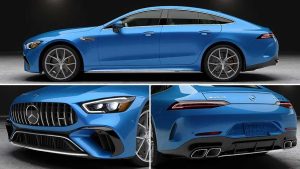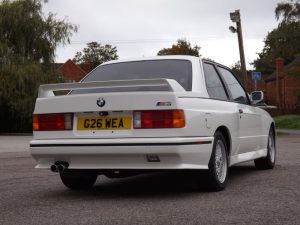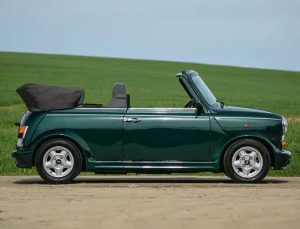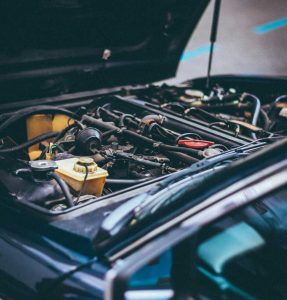Eight Standout Cars That Ditched Their Roofs
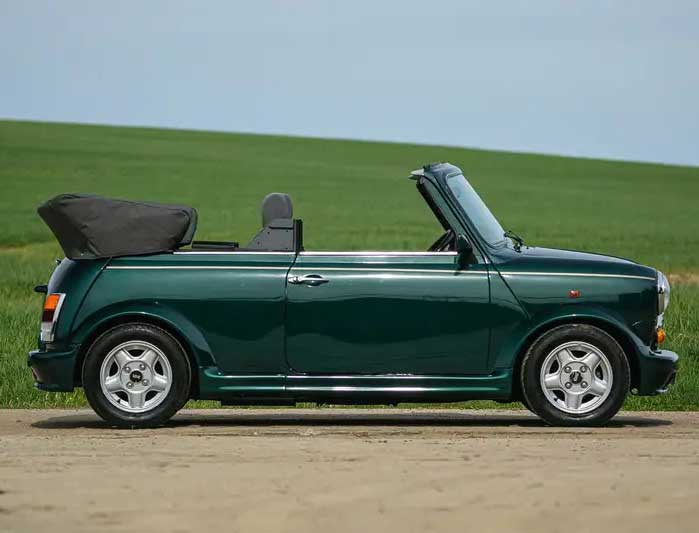
classic mini convertible
Some of the most memorable open-air machines were never born that way. In the United States, especially from the mid-1970s through the late 1980s, mainstream automakers all but abandoned the convertible, spooked by looming safety regulations and buoyed by the popularity of air conditioning, sunroofs, and T-tops. Yet demand for wind-in-the-hair motoring never died. Coachbuilders and specialist shops stepped in, cut carefully, and braced cleverly—turning coupes and even SUVs into credible drop-tops.
Converting a closed car to a convertible is serious surgery. Remove a roof and you remove a significant portion of the car’s strength. The best conversions add discreet reinforcement to restore rigidity and safety, integrate weatherproofing so the car can be driven year-round, and finish the job with a well-fitted soft top. Done right, the result feels natural—almost as if the factory intended it all along.
1981 Chevrolet Corvette
Chevrolet stopped offering a third-generation Corvette convertible after 1975, making this early-’80s drop-top an instant head-turner. Converted from a T-top coupe, it wears late C3-style spoilers and flares that flatter its low, long profile. Under the hood is a 5.7-liter V8 paired with a four-speed manual—classic ingredients for analog American fun—with chassis bracing to help the independent suspension do its work. It has been mechanically freshened and includes a new soft top ready to be fitted. Expect Corvette diehards to do a double-take.
2011 Dodge Challenger SRT8 392
The modern Challenger never came as a factory convertible, but this SRT8 proves it should have. A professional conversion adds structural bracing (a keen eye will spot it in the trunk), a premium power cloth top, and a smartly narrowed rear seatback to accommodate the hardware without sacrificing passenger space. The headline is under the hood: a supercharged 6.4-liter Hemi pushing a dyno-verified 607 horsepower through a five-speed automatic. Heated leather buckets and a well-finished cabin make this brute as livable as it is loud.
1982 Ferrari 400i Automatic
Few coupes look as composed without a roof as Ferrari’s elegant 365/400/412 series. Several respected shops, including Richard Straman Coachworks, transformed these four-seat grand tourers into graceful spiders. This automatic 400i wears its conversion confidently, with an interior in rich brown leather, matching soft top, and body-color accents on the classic five-spoke wheels. The fuel-injected 4.8-liter V12 delivers relaxed, velvety power—think Riviera sunsets rather than racetrack heroics. It’s an uncommon, civilized way to sample open-air V12 Ferrari motoring.
1983 Pontiac Firebird Trans Am “K.I.T.T.”
A childhood fantasy made metal: this period-converted third-gen Trans Am channels Knight Rider’s final-season hero car, complete with the iconic red nose scanner, voice-inflected digital dash, and a clever hinged hard panel over the seats that replicates KITT’s “permanent” convertible profile. The powertrain sticks to era-authentic hardware, with a Cross-Fire-injected 5.0-liter V8 and overdrive automatic. It’s equal parts TV nostalgia and cars-and-coffee showpiece.
1992 Land Rover Defender 110
Land Rover never sold a four-door soft-top Defender 110, but this restomod makes a persuasive case. Low-cut doors, side curtains, a removable safari cage, and a properly trimmed canvas top are matched with teak flooring and waterproof leather—practical luxury for the trail. The 2.5-liter turbodiesel and five-speed manual deliver classic Defender character and go-anywhere credibility. It’s a lifestyle statement that still remembers its roots.
1997 Rover Mini
Factory Mini convertibles arrived only in the 1990s, but conversion kits kept the concept alive worldwide. This right-hand-drive Rover Mini uses a Keith’s Convertible Kit that retains reinforced roof rails and a steel hoop for added strength—sensible in a car this small. Backdated styling touches nod to early Morris Minis, from the grille to the center-mounted speedometer, while a 1.3-liter four-cylinder and four-speed manual supply eager city pace. Vintage charm, modern reliability, and a roof that disappears on sunny days.
1972 Saab 96
Long before the 900 Turbo ragtop became a status symbol, Saab never built a convertible for the masses. This dealer-converted 96 answers the what-if with quirky panache. Reinforced and reimagined as a two-seater with a snug cockpit tonneau—and no folding top mentioned—it’s a tidy weekend runabout powered by a durable 1.7-liter Ford-sourced V4 and column-shifted four-speed. Sonett-style “soccer ball” wheels complete the look. As left-field as it sounds, and all the better for it.
2007 Toyota FJ Cruiser
Newport Convertible Engineering found a way to give Toyota’s retro off-roader the open-air treatment without losing its signature rear-hinged access doors. Believed to be one of fewer than 50 conversions, this FJ keeps its 4.0-liter V6, automatic transmission, and four-wheel-drive hardware intact. The power top has been disengaged but works manually—an acceptable compromise given the rarity and the fun factor. Think of it as a Wrangler alternative with Toyota manners and a surf’s-up personality.
Convertible conversions sit at the crossroads of creativity and engineering. They reward their owners with a driving experience unlike any coupe and a story unlike any stock convertible.


